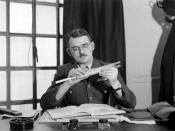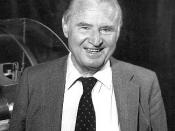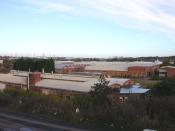The jet engine
Sir Isaac Newton discovered the jet principles in the 18th century. This was base on the theory that "to every action there is an equal and opposite reaction" (third law of Newton). But it is only in the 1930 that the idea to build a jet engine appeared. This was happening in England with Sir Frank Whittle and in Germany with Dr. Hans von Ohain. Sir Frank Whittle had the first patent of the turbojet engine in 1936. Dr. Hans von Ohain finished the design of his engine a bit later but would have it flying first
, powering the Heinkel He178 on the 27th of August 1939. It is worth noting that both men, re-cognised as the co-inventors of the jet engine, had no knowledge of their respective work.
On an international level, WWII had started and there was a drive to have those engines fitted to airplanes to gain supremacies of the skies.
Messerschmitt accomplished this in Germany, producing the Me262 . This was the only jet fighter of WWII . The airplane flew very little amount of mission , due to is fuel consumption being extremely hard. The British had DeHavilland DH-100 Vampire designed by 1941 but only became operational in 1946.
After WWII the development of the jet engine benefited again from the tension of two parties, the West and the East. The cold war was probably a major factor in the speed at which the jet engine developed. The Americans had recover from WWII and had a far better economy than their European counter parts. The US government was funding heavily the research. They won the race for the sound barrier on the 14th of October 1947 with Captain Charles E. Yeager flying his Bell XS-1 at Mach 1.06. It was...


